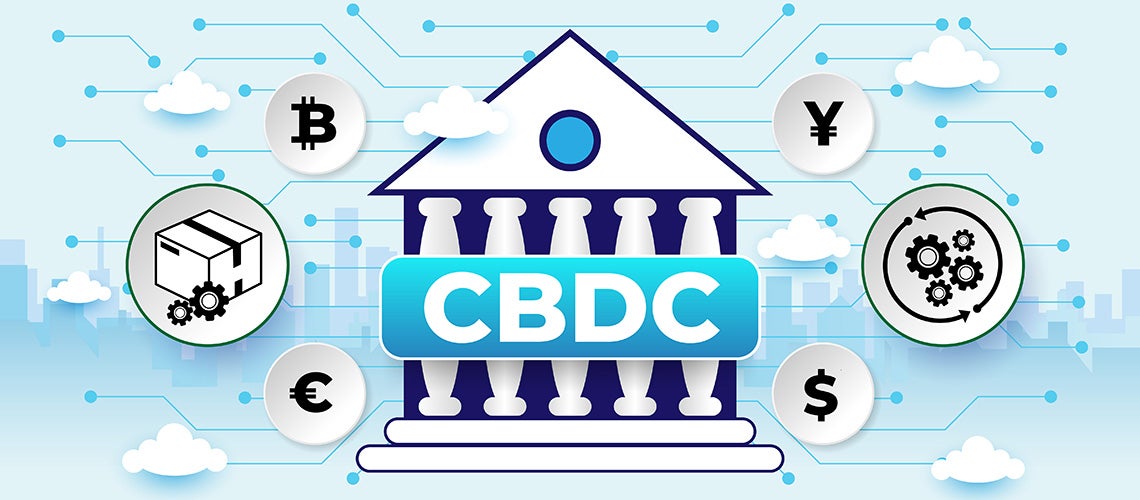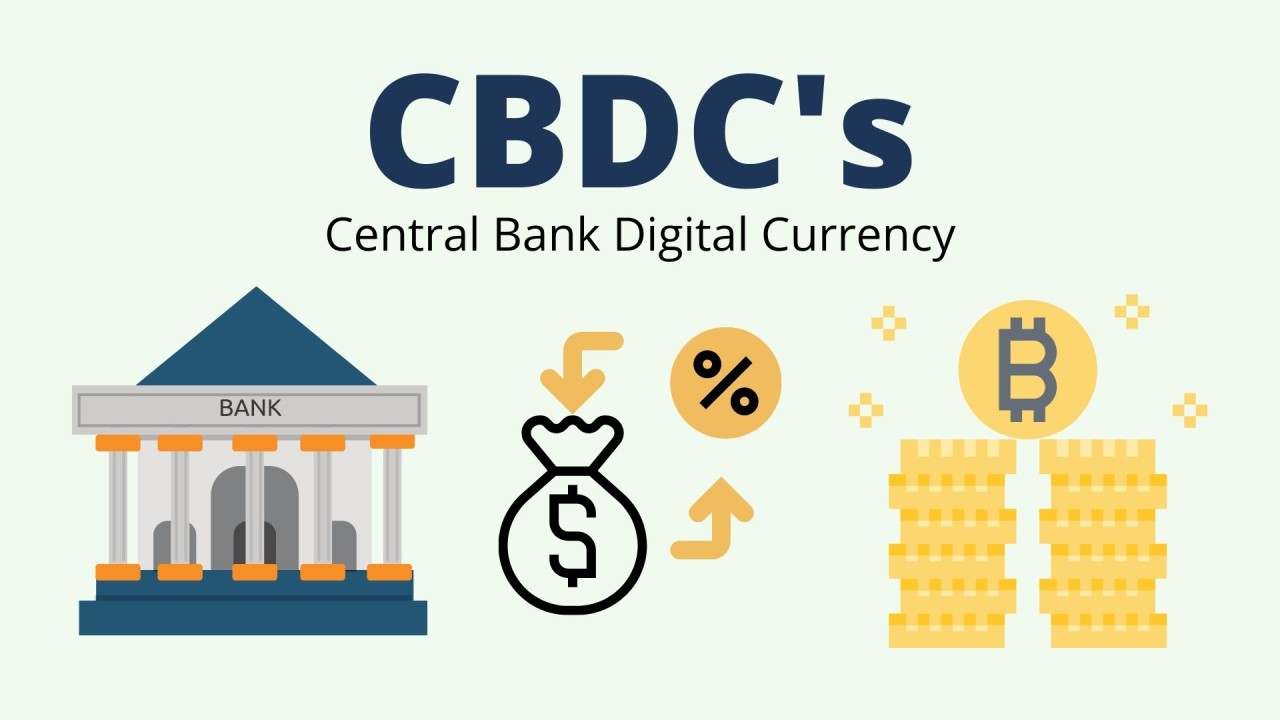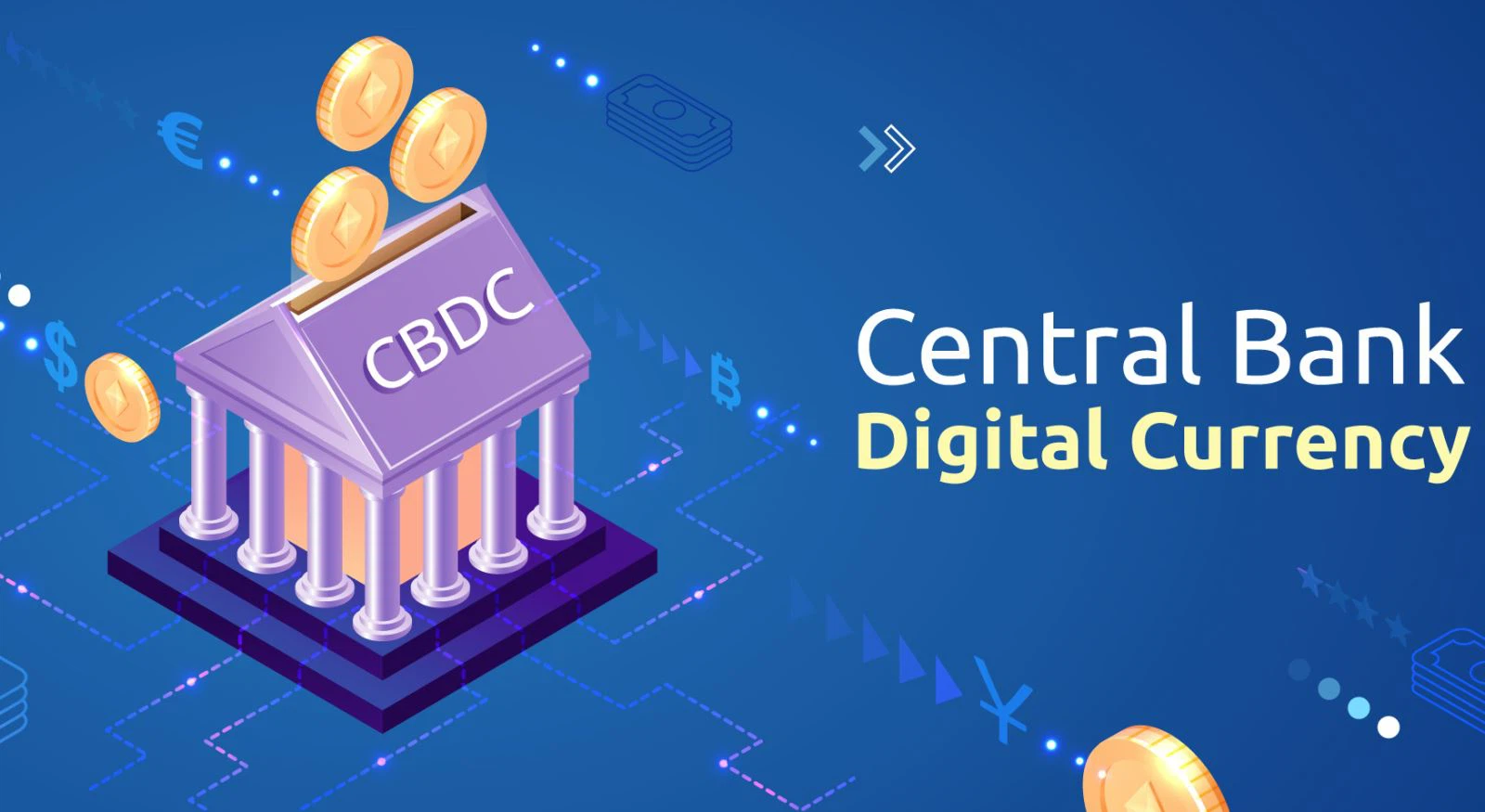As we ride the digital wave, Impact of CBDC on traditional banking looms large. Will your trusted local bank branch hold its ground or crumble? With central banks worldwide flirting with digital currencies, a new tide is set to hit the shores of traditional finance. It’s time to ask: Can the old and the new blend—or will one wash away the other? Follow me as we dive into the depths of this financial evolution and discover if our current banking methods can survive the shift or if they are destined to be a relic of the past. Buckle up; you’re in for an insightful journey!
Understanding the Role of CBDC in Modern Finance
The Emergence of CBDCs and Their Fundamental Mechanisms
Let’s talk about the new kid on the block in the money world: CBDCs. What’s a CBDC? It’s like your dollar bills turned digital, but it’s by the central bank, not a private company. So when you use a CBDC, you’re using money that’s as real as the cash in your wallet, only it’s on your phone or another digital device.
Now, why do CBDCs matter? They can make buying things or sending money faster and safer. No need to wait for bank transfers to clear for days. With a CBDC, money moves in a snap, at any time. It’s like the fast lane for your money!
Central Bank Digital Currencies’ Place in the Financial Ecosystem
CBDCs are shaking up how money works. They bring everyone to the table, from big banks to small shops. This could mean big changes, especially for banks. Banks have always been the places where your money sits. But what if there’s a new place, one that’s run by the folks who print money?
Here’s the nitty-gritty: if people start using CBDCs a lot, banks could see dollars slip through their fingers. Less money at the bank means they have less to work with. They can’t loan out cash they don’t have, right? And when banks loan less, they also earn less.
Some are worried about how this all stacks up for banks. Will people still need a traditional bank if they have CBDCs? The truth is, banks do more than just hold your money—they help you buy houses, save for retirement, and maybe start a business. CBDCs might change how banks move money, but they don’t replace all the smarts and services banks offer.
Trying to fit CBDCs into the banking dance isn’t easy. Banks have to learn new moves and grooves. They need to work with CBDCs, not against them, to keep your trust and stay head of the game.
I’m watching banks get creative. They’re finding fresh ways to hook you in, like offering you better deals or new services. And they’re talking with the big bosses—central banks—to make sure everyone plays fair.
One more thing: banks also help keep money safe. So even with CBDCs, they’ve got an edge, because they’re pros at guarding your cash from the bad guys.
CBDCs aren’t just a fad. They’re becoming part of how money moves. But here’s the kicker: banks won’t go poof and vanish. They’re too wrapped up in everything we do with money. From buying a snack to buying a house, we need ’em both.
As I dig deeper into how CBDCs work with banks, the picture gets clearer. Sure, there are waves coming, but banks have surfed tough tides before. They’ll change, grow, and find their place beside CBDCs. For us, that means getting the best of both worlds—a safe place for our money and a speedy way to use it.
Assessing the Strategic Shift for Traditional Banks
Impact of CBDC Introduction on Bank Profitability and Operation
Banks face a big shift with digital money coming into play. Cash goes digital, and so do many opportunities and risks for banks. They can’t just sit back. Let’s get real: CBDCs are rocking the boat, and it’s time for banks to learn to swim in these new waters.
Central bank digital currencies sort of act like usual money, but they live in cyberspace. Every CBDC move is a record on a secure list, known as a blockchain. This means no fake money and clear tracks of every penny. Banks now ask, “How do we fit in?”
Banks used to be the go-to for keeping cash safe. But if money turns digital, can people just skip the bank? Might seem so, but banks have a card up their sleeve. They know money like no one else does. They adjust, mix in new tech, and keep their edge. They can help people use CBDCs while still giving loans, keeping cash flowing, and looking out for customers.
CBDC adoption could hurt banks’ cash flow. When cash moves to digital, some people might leave banks to use CBDCs directly. If that cash leaves, banks have less to loan out, and that’s how they make money. It’s a tough spot, but banks can team up with central banks to make sure they still play a key role.
Adapting Commercial Banking Services in the Age of Digital Currency
Do you think old banks and new digital cash can get along? They have to. Sure, CBDCs are the shiny new thing in finance, but banks hold trust and history in their hands. They can’t just watch from the sidelines. They have got to jump in and make their services fit the digital age.
The banking sector knows it needs to keep up. That means more than just a fresh lick of paint on the bank app. It means rethinking what a bank does. Banks need to rebuild their services to match the CBDC world. They can focus on what they’re super good at, like giving advice, loans, and secure spots for people’s savings.
Think about payments and sending money. With CBDCs, this could happen in a snap, no matter where you are. Banks have a chance to make this even better. They can offer ways to pay that mix CBDC ease with bank safety.
And what about loans? Even with CBDCs around, folks will still need extra cash for big dreams. Banks can be there, ready to lend. They can check if loans make sense in ways a machine can’t. It’s about more than numbers; it’s about people.
Banks might not look the same in a CBDC future. But they can still count on what they’ve always been great at: helping people with their money needs. And when banks focus on that, they’ll stay afloat, no matter how strong the digital wave crashes in.
So, it’s not about if banks can survive. It’s about how they ride the wave, change up their game, and keep winning customers’ trust. The age of digital cash is here, and banks must grab their surfboards, carve out their spot, and show the world they can surf the CBDC wave like champs.
CBDC Integration and its Effects on Banking Practices
The Evolution of Deposit Mobilization Amidst Digital Currency Trends
Banks have found smart ways to gather deposits over the years. But as digital money grows, banks face new trials. Central bank digital currencies, or CBDCs, change how we think about money stash. They offer a direct way for people to keep digital money with the national bank. This means fewer folks might need traditional bank accounts to hold their cash.
Old-school banks may need to up their game. They might offer more interest or new services to attract people. And yes, these moves could shave off some profits. But it’s all in the name of keeping customers close. Think of it as banks pulling out all the stops to show they’re worth sticking with.
CBDCs can take a slice of banks’ deposit pie. Banks respond by giving out more loans and seeking fresh income sources. They’re tough and know how to adapt fast. They’ve seen change before—like when the internet arrived—and they’ve stayed strong.
CBDCs and Their Influence on Traditional Lending Models
Picture this: you want to borrow cash. You used to visit a local bank, chat with the manager, fill out papers, and wait. Enter CBDCs. They could mean borrowing directly from the central bank. So, banks get creative. They might make their loan deals sweeter to compete.
CBDCs could lead to quicker and cheaper loans. This can be great for everyday folks. For banks? They might have to slice loan rates to stay appealing. This pressures profit but banks aren’t down for the count. They know their local markets and customers. They’ll find new ways to win business, maybe even partnering with CBDCs in the mix.
Risk is a big word in banking. With digital currency, banks must watch out for tech hiccups and people’s trust issues. But don’t count them out just yet. Banks have a knack for tackling tough spots and coming out on top.
In the end, banks aren’t going anywhere fast. They’re like mighty ships in the financial ocean. Sure, CBDCs might stir up some waves. But banks have strong captains and crews ready to steer through. Banks and CBDCs could end up sailing along together, each playing their part in our money world.
Traditional lending won’t just vanish. Banks might hold hands with CBDC systems for secure, easy loans. The key is how well they dance together. Can banks twirl with digital trends while keeping their core beats? That’s the move we’re all watching.
Navigating the Challenges and Opportunities Presented by CBDCs
The Competitive Landscape: Central Bank Digital Currencies Versus Private Banks
Banks are facing a big wave called CBDC. Simply put, this is money, but digital and by a country’s central bank. Do you wonder how this changes things for your bank account? Let’s talk about that.
CBDC effects on banks are serious. How? Think of a race. Before, your bank was maybe one of the few runners. With CBDCs, the race has more runners, and they’re fast. These digital currencies from central banks can offer what private banks do. Sometimes, they do it better – or cheaper.
“Will my bank still be useful?” you might ask. Yes, for now, because CBDCs are new. But banks must change, or they’ll get left in the dust. Traditional bank versus CBDC is like old phone versus smartphone. Most love their smartphones more, right?
We need to think about CBDC adoption and bank profitability. Banks make money from deposits and lending. If we choose CBDCs for saving and paying, banks might not see as much cash as before. This means banks could lend less and make less.
But don’t fret just yet. Banks are smart. They know they must offer something better or different. We may see cooler banking services soon. And CBDC? It needs to be safe and work with what we already use. This is called interoperability of CBDC with banking.
Building Robust Policies and Systems for a Smooth Transition to CBDC Operations
Now, on to getting banks ready for the big leap. Banks can’t just say “Let’s use CBDC!” and be done with it. They need plans. Big, smart plans, to mix the old with the new.
Imagine a big machine. It’s your bank’s system. We’re adding new parts – that’s the CBDC technology. The whole thing needs to work smooth like butter. No breakdowns allowed!
This means bank folks and tech folks need to work hand in hand. To bake this cake right, you need more than just flour. You need eggs, sugar, the works! Banks need policies for risks, money flow, and keeping you happy. All with CBDC in the mix.
Digital currency impact on deposits could be less money in the bank. Less money means banks need to be extra careful. They could find new ways to lend or maybe offer services we don’t even know we need yet.
What about laws? CBDCs are still new kids on the block. The rules aren’t all there yet. Banks and governments must talk, decide, and write down the do’s and don’ts. This is CBDC regulation and bank policy making friends.
And what’s a bank without people like you? Customer relationships and CBDC emergence need to go hand in hand. Banks must show they care about you in this new digital world.
In this big digital wave, banks have to surf or sink. With a strong grip on their boards – smart planning and neat tricks – banks can ride high. I’m here to show them how. Because behind the digital numbers and tech, it’s all about trust, ease, and smart money choices. Let’s dive in together and see where this wave takes us!
We’ve looked at how CBDCs are changing money in big ways. Digital money from central banks is here, and it’s a big deal for financial systems. It impacts how banks make money and work every day. Banks are now changing their services because the world is going digital.
We also saw how banks keep deposits and lend money is shifting because of CBDCs. This new digital shift shakes up old ways and means new rules for the money game.
And let’s not forget the challenges and wins that CBDCs bring. It’s a battle out there with digital money versus private banks. Banks must be smart and plan well to move to digital smoothly.
So here’s the final scoop: CBDCs are a big change in finance, so everyone: banks, businesses, and you need to stay sharp. Let’s get ready for the future of money!
Q&A :
How will CBDCs affect traditional banks?
Central Bank Digital Currencies (CBDCs) have the potential to significantly disrupt the traditional banking landscape. As digital representations of a nation’s fiat currency, they may alter how banks interact with money, offering a new form of highly secure and efficient money that could compete with banks’ deposit accounts. CBDCs could also streamline the settlement process and reduce transaction costs, but they may also reduce banks’ control over the money supply and interest rates, potentially leading to a fundamental shift in banks’ business models and revenue structures.
Can CBDCs coexist with conventional bank deposits?
Yes, CBDCs can coexist with conventional bank deposits, but the dynamics of the financial system could change. The coexistence will depend on the design and implementation of the CBDC system. If structured to complement traditional banking, CBDCs could serve as an additional option for consumers, ensuring financial stability and competition. However, if consumers vastly prefer CBDCs to bank deposits, this could lead to a significant reallocation of funds from banks to central banks, affecting banks’ ability to lend and create credit.
What impact will CBDC have on lending by traditional banks?
The introduction of CBDC could influence traditional banks’ lending capabilities in several ways. If significant amounts of money are converted into CBDC, banks may have fewer deposits to use as the basis for lending, which could restrict credit creation and potentially increase borrowing costs. However, some models of CBDC implementation include mechanisms that could allow banks to obtain funds directly from the central bank for lending purposes, which may mitigate this impact.
Will the implementation of CBDCs lead to the end of physical cash?
While the rise of CBDCs signals a move towards more digitized currency systems, it may not necessarily spell the end of physical cash. Central banks may continue to support cash for its inclusivity, ensuring that those without access to digital technologies or who prefer cash transactions are not marginalized. Nonetheless, the adoption rate of CBDC could influence the continued use and acceptance of cash, potentially reducing its prominence over time.
How might CBDCs impact financial stability?
CBDCs could either strengthen or undermine financial stability, depending on their design and the economic context. By providing a secure and efficient digital payment system, CBDCs could enhance stability during normal times. However, during financial crises, there is a risk that consumers might rapidly convert bank deposits into CBDC, leading to destabilizing bank runs unless proper safeguards are in place. Careful design and regulations around CBDCs are crucial in ensuring they contribute positively to the overall stability of the financial system.




